Have you ever wondered if there’s a better way to understand The Sermon on the Mount? In this article, we’ll explore how the Beatitudes may hold the key to grasping the Sermon on the Mount in a way that is easily overlooked by modern readers. Specifically, we’ll be exploring the idea that the Sermon on the Mount not only begins with the Beatitudes but is actually structured by them in reverse!

As mentioned, after we get the opening statement of Matthew 5…

…the Sermon begins with the 8 Beatitudes…

We’re gonna look at these as we go through how they structure the sermon in reverse.
Beatitude #8 -> Sermon Portion #1 (Matt. 5:11-20)
The last beatitude is “Blessed are those who are persecuted because of righteousness for there’s will be the kingdom of heaven.
After that last beatitude, Matthew 5:11-20 then begins immediately addressing the idea of persecuton for righteousness and not losing that righteousness in the world (salt keeping its taste and light not being hidden) and that righteousness being greater than the worlds.
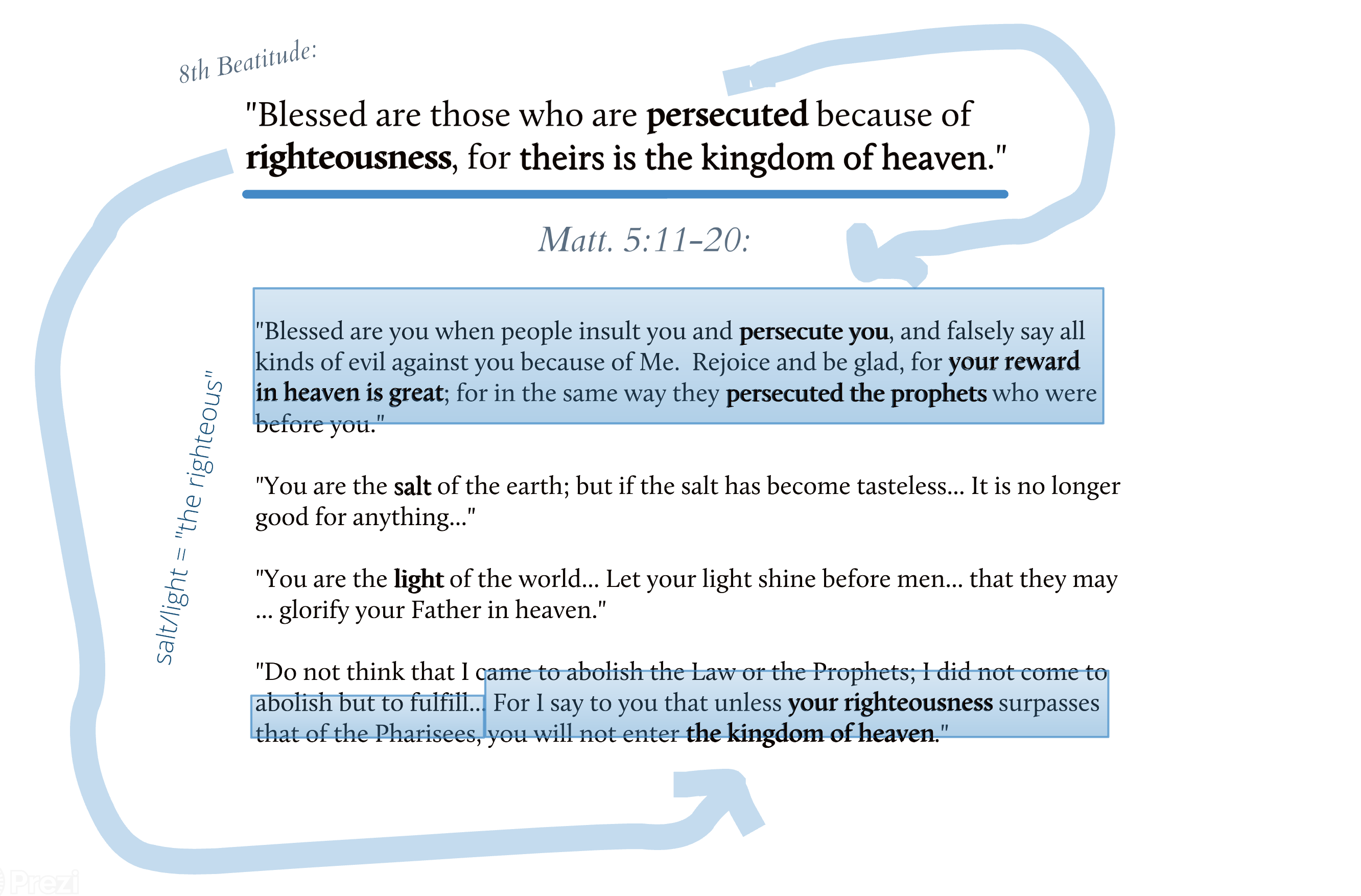
Beatitude #7 -> Sermon Portion #2 (Matt. 5:21-26)
Next the Sermon moves on to fleshing out the next Beatitude (moving backwards) by addressing the idea of peacemaking including not doing the opposite (fighting with others).
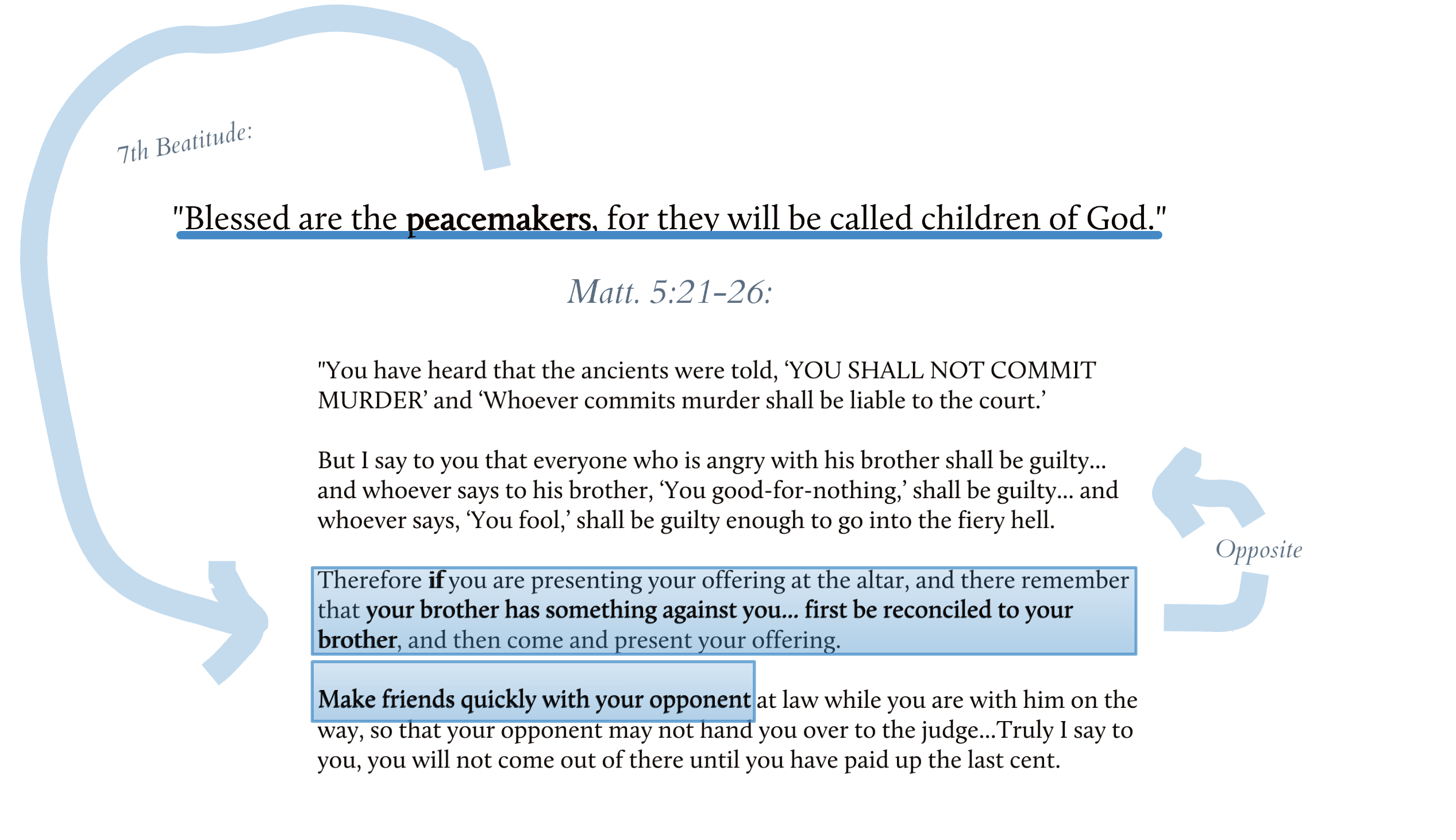
Beatitude #6 -> Sermon Portion #3 (Matt. 5:27-37)
After, the Sermon moves backward to flesh out the next Beatitude and the call to be “pure in heart”.

This part of the Sermon addresses a couple of facets of being “pure in heart” both in regards to sexual purity and in regards to honesty (which parallels Psalm 24’s definition for being “pure in heart” enough to “see God”):
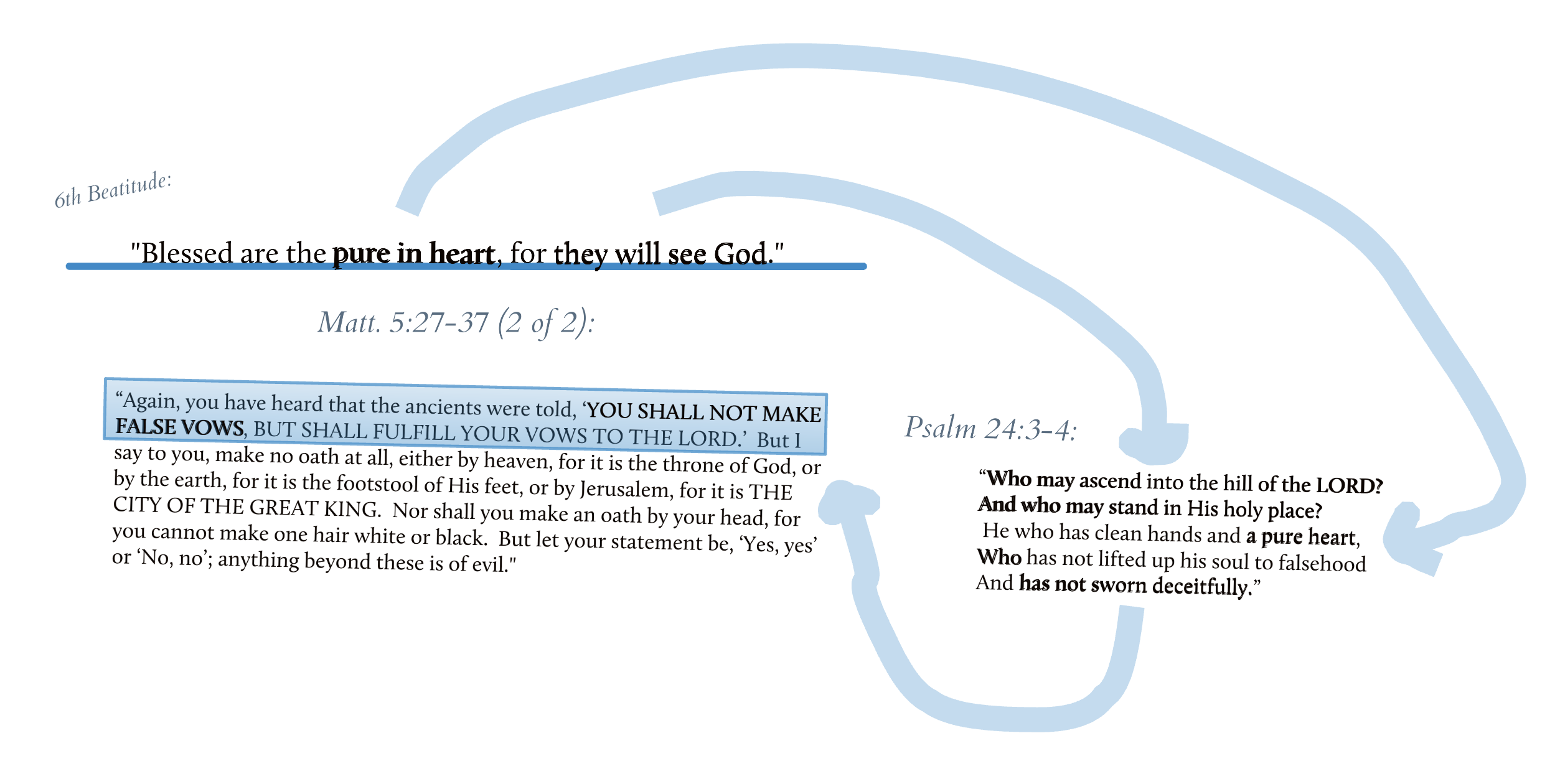
Beatitude #5 -> Sermon Portion #4 (Matt. 5:38-48)
Then onto the next beatitude moving backwards yet again… fleshing out ideas of mercy and forgiveness.
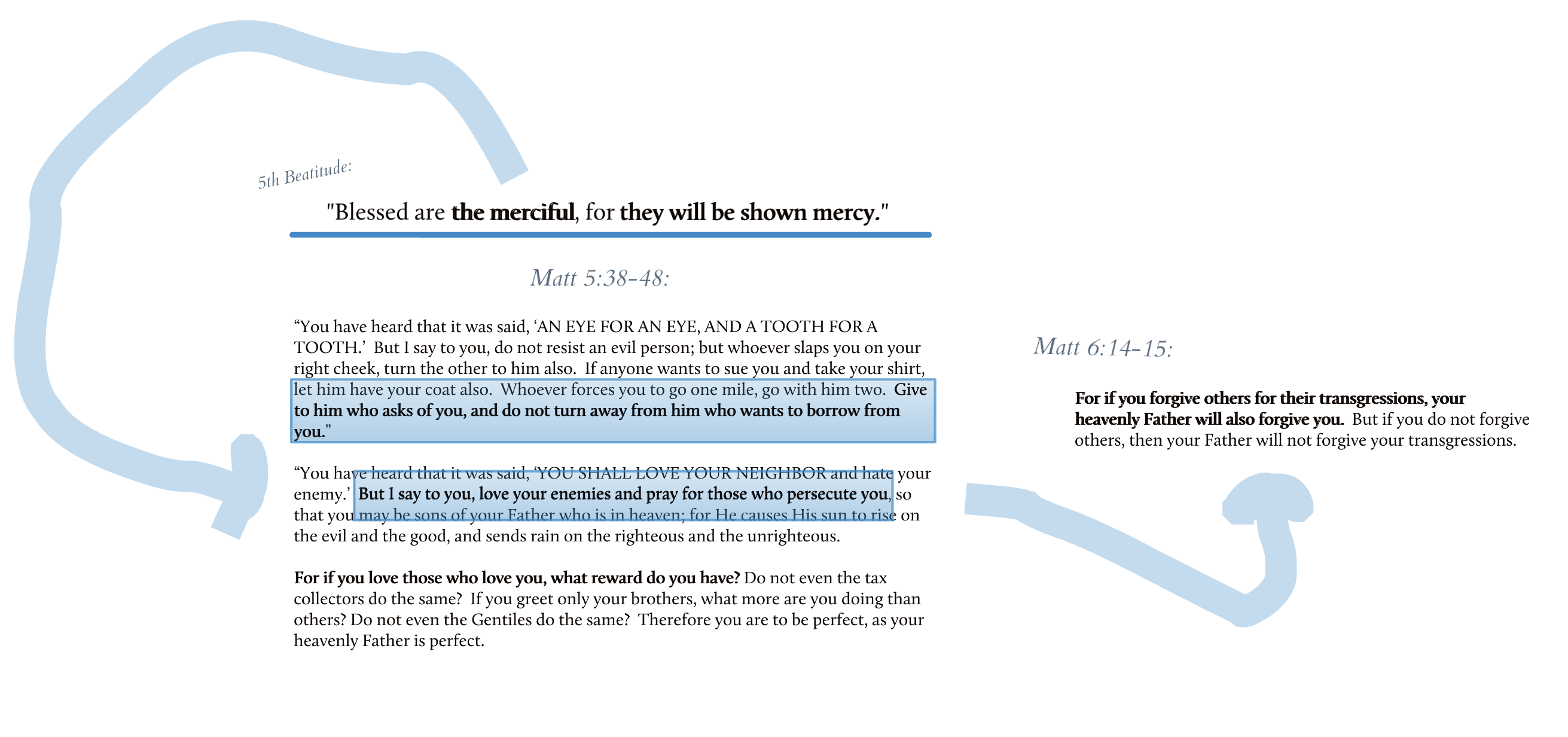
Beatitude #4 -> Sermon Portion #5 (Matt. 6:1-18)
The next portion of the Sermon can be seen to flesh out Beatitude #4 and specifically how to satisfy one’s thirst for righteousness in a God pleasing way.
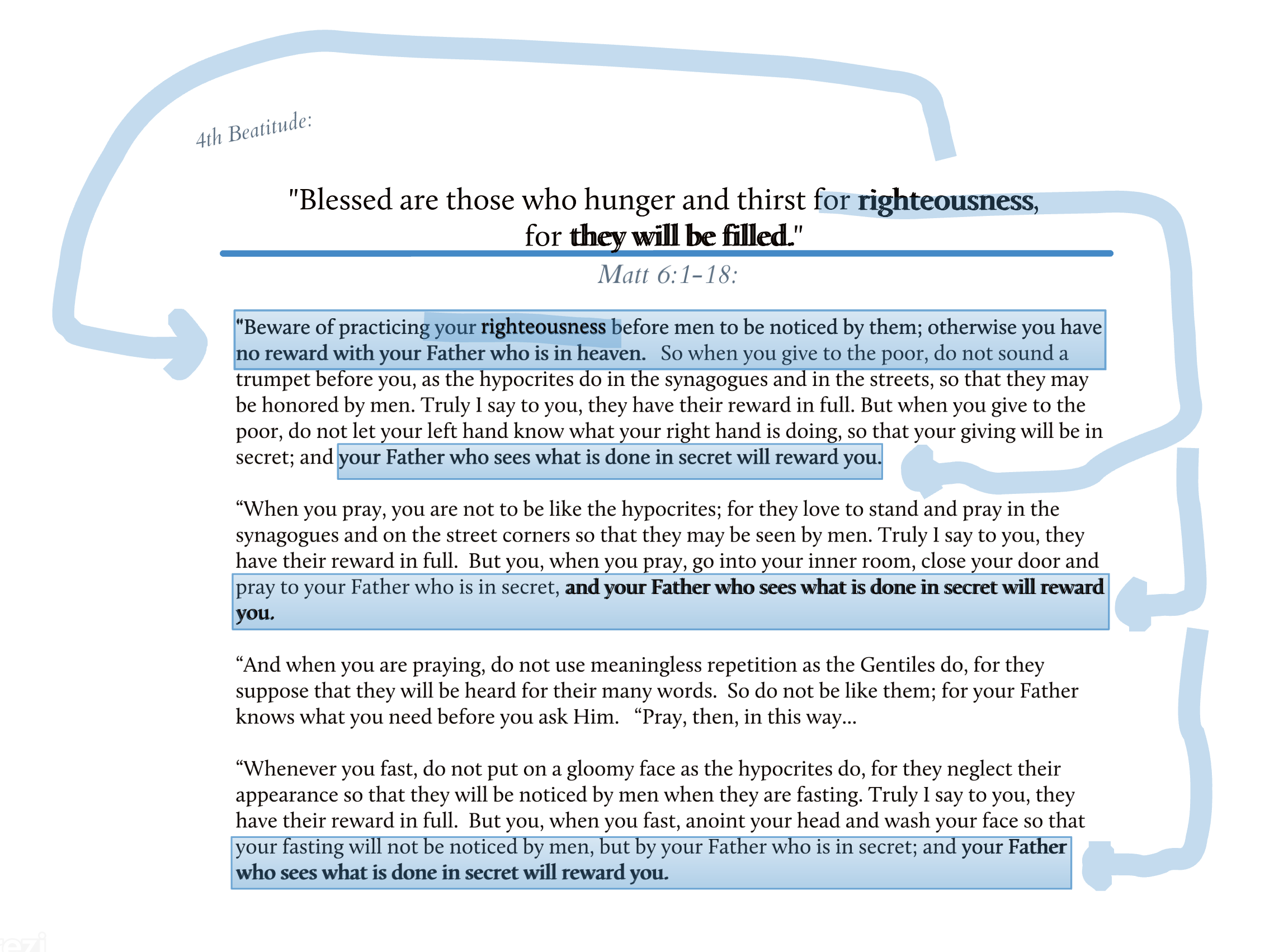
Beatitude #3 -> Sermon Portion #6 (Matt. 6:19-33)
The next portion of the Sermon fleshes out Beatitude #3 and does so in a way that reflects its origins in Psalm 37…
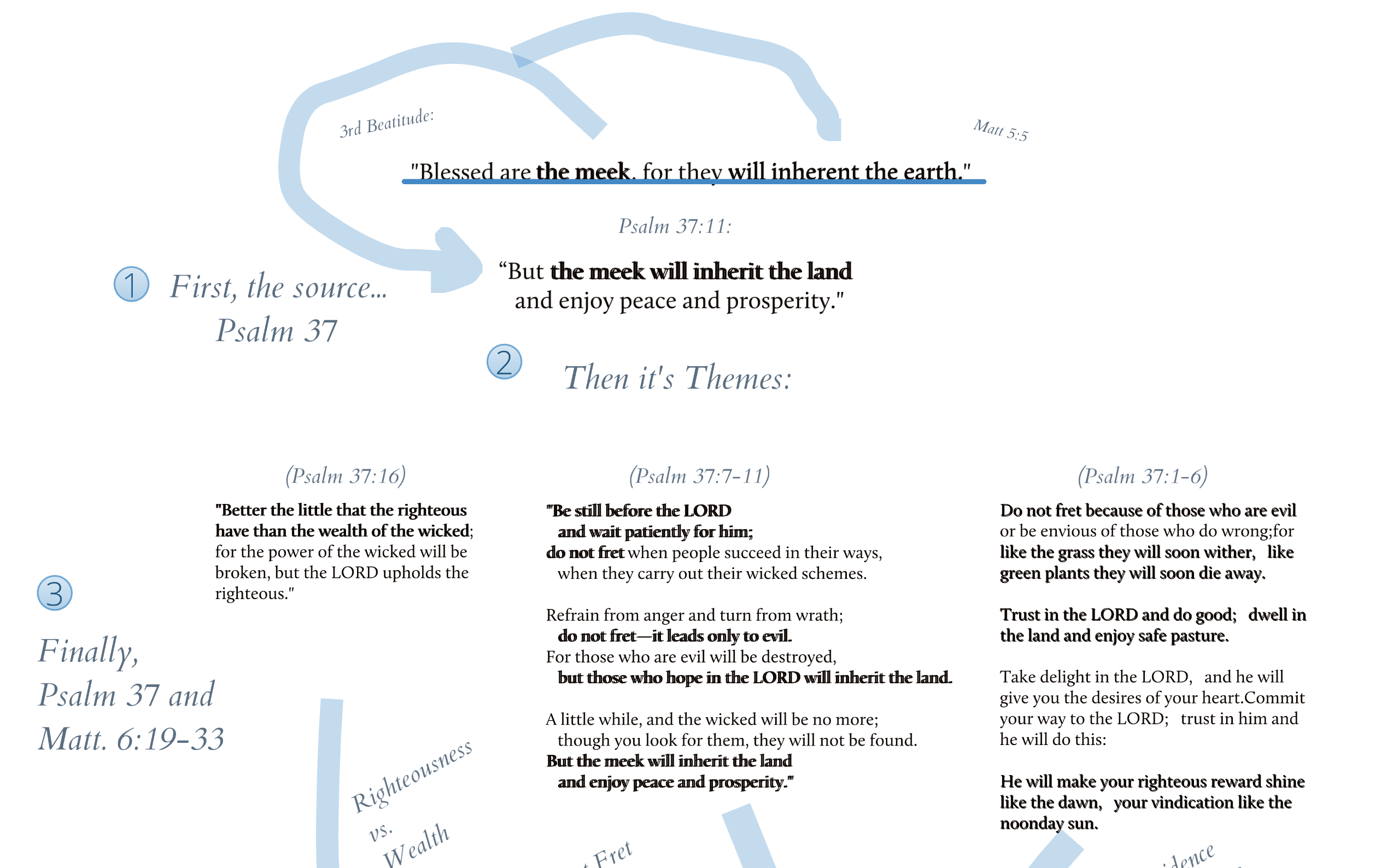
…with a good peak at relevant portions of Psalm 37, consider how the themes it expresses are reflected in this portion of the Sermon…

Beatitude #2 -> Sermon Portion #7 (Matt. 7:1-6)
The next portion of the Sermon continues moving backward now to Beattatitude #2.
In this case, the idea of “mourning” insight seems to be the same as expressed by Paul in 1 Corinthians 5 (using the same Greek word), that is “mourning” over one’s own sin…
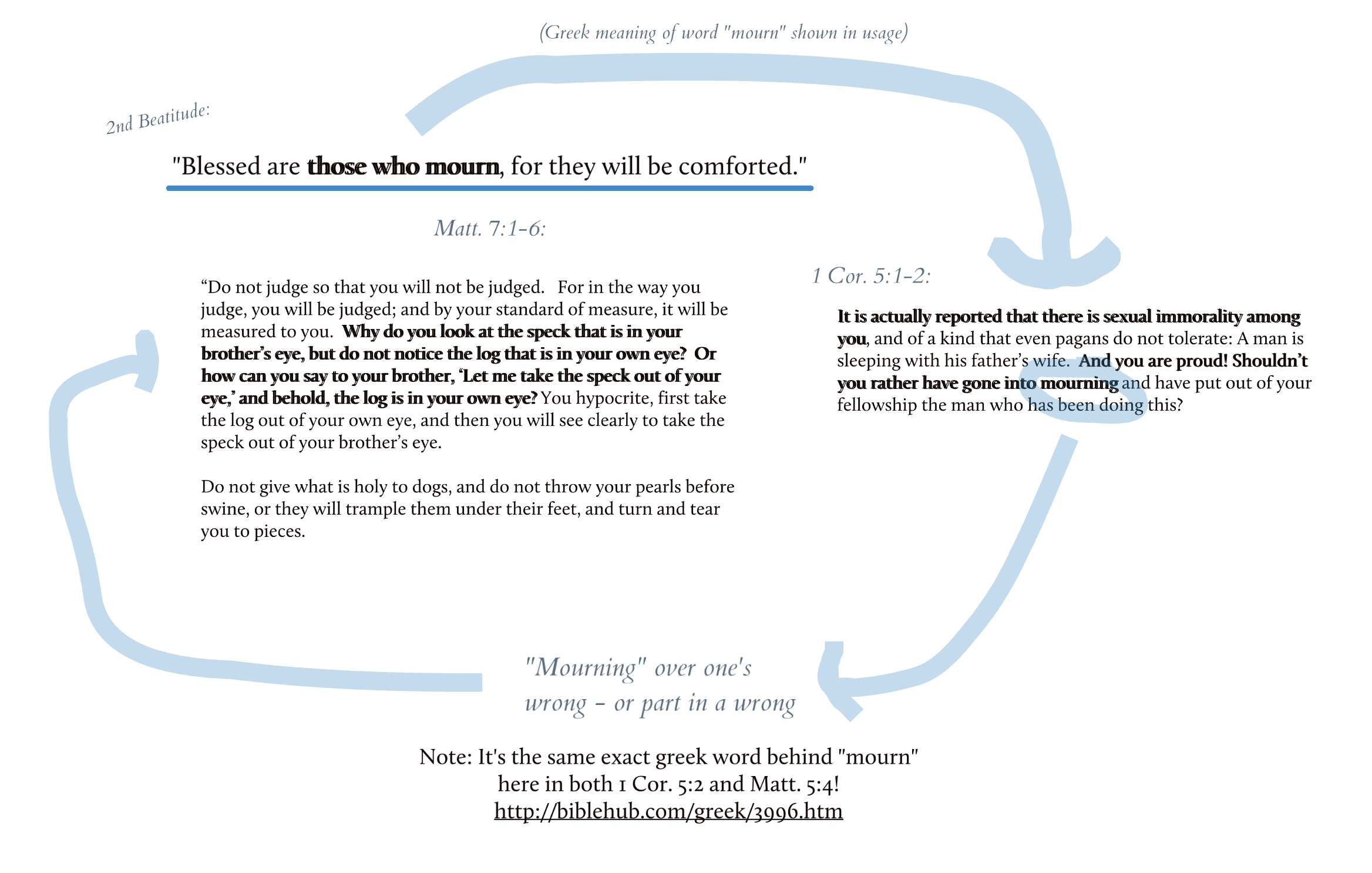
This idea of contrition notably not being expressed in the other 7 Beatitudes earns not only its presence in the Sermon here but also reveals perhaps more than the others how the Beatitudes structuring of the Sermon can actually help clarify their meaning for modern readers in spite of the gulf of time and translation.
Beatitude #1 -> Sermon Portion #8 (Matt. 7:7-11)
Finally, the Sermon wraps things up by quickly addressing Beatitude #1… encouraging the needy or “poor in spirit” to bring those needs to God…

Summary
And with that, all 8 beatitudes have been expanding upon by Jesus in the Sermon…
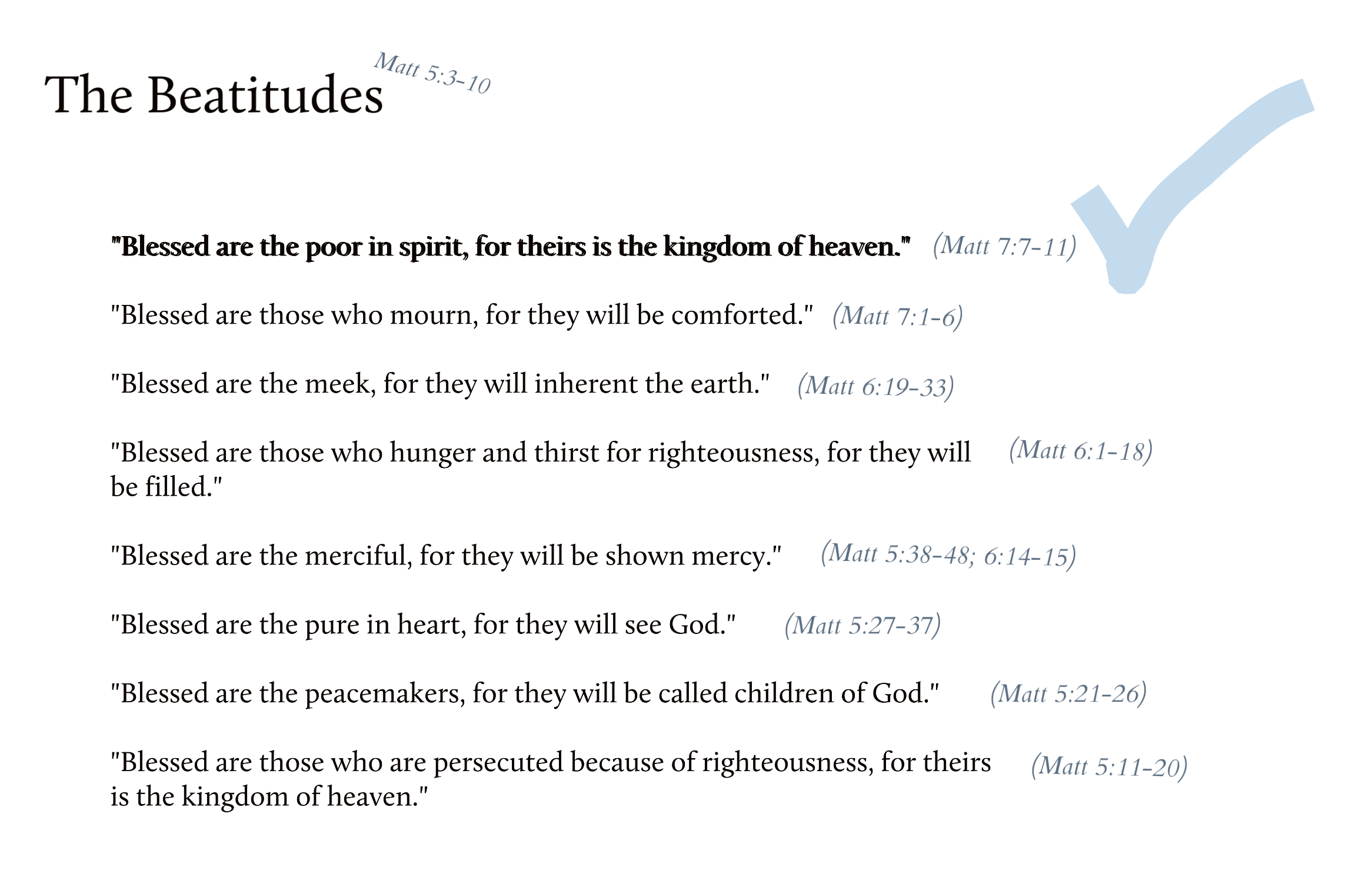
What follows in the part of the Sermon that remains is:
- A Summary Statement (Matt. 7:12)
- And quick 3 closing parables (Matt. 7:13-28)

And that’s it! (Matt. 7:29 wraps it up)

Conclusion
As mentioned before, seeing how the Beatitudes structure the Sermon on the Mount can help clarify their meaning AND provide a way for reader’s to grasp the overall ideas of the Sermon in 8 points as Jesus himself models in its introduction…
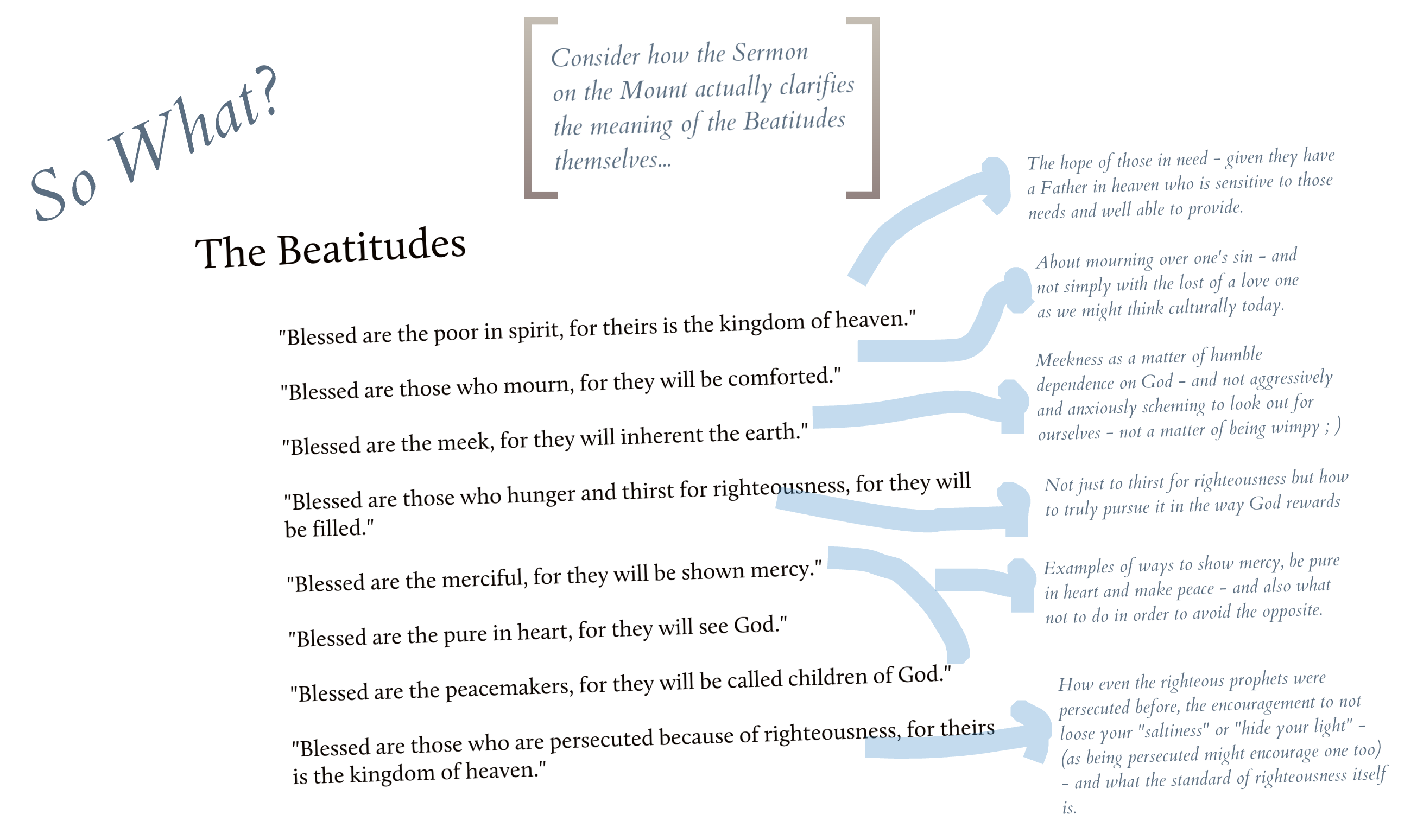
Note: You can also check out my original “Prezi” presentation that the above screen shots are taken from below.
References
The primary reference for information in this blog post is the following book by late bible scholar Michael Goulder:
- Goulder, Michael – Midrash and Lection in Matthew (book), Chapter 12 – Pentecost: The Unity of the Sermon.

